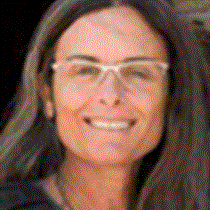Santa Rosalia & At Sea
This morning we awoke on a northerly course bound for the town of Santa Rosalia. Though it is located on the main North/South road that runs the length of the Baja Peninsula, Santa Rosalia retains its small town character. The town was mainly formed around the successful copper mining industry begun in the mid 1800’s, lasting until the mid 1950’s. Now, fishing is a primary source of work for the locals, and the harbor is rimmed with pangas, the Mexican artisanal fishing boats.
Today is Palm Sunday, the beginning of the Mexican holiday week leading up to Easter, and the town was alive with people and activity. As we explored the waterfront we found a few fishermen unloading and cleaning their catch, with pelicans and gulls standing by, awaiting any left-behind scraps. Walking inland into town, the taco stands were doing a brisk business with families having lunch. At the church and on the sidewalks, Oaxacan Indians were selling various items, from cowboy hats to small handmade items woven from palm fronds. Late in the morning there was an unexpected visit. Found only during Cuaresma, the 40 day period before Semana Santa (Easter), men and boys of the Yaqui Fariseos were walking and dancing their way through town, dressed in costumes topped with large animal themed head masks.
We returned to the ship in the early afternoon to resume our journey north. Our Captain charted a gentle course through an exciting sea, this time headed for the Gulf Islands of the Sea of Cortés. As we settled into the voyage, Flip treated us to the Lindblad Expeditions premier of the BBC special, Nature’s Greatest Events: The Great Feast — a marvelously filmed documentary on the food chain supported by the mid-summer algae bloom concentrated in Southeast Alaska.
This morning we awoke on a northerly course bound for the town of Santa Rosalia. Though it is located on the main North/South road that runs the length of the Baja Peninsula, Santa Rosalia retains its small town character. The town was mainly formed around the successful copper mining industry begun in the mid 1800’s, lasting until the mid 1950’s. Now, fishing is a primary source of work for the locals, and the harbor is rimmed with pangas, the Mexican artisanal fishing boats.
Today is Palm Sunday, the beginning of the Mexican holiday week leading up to Easter, and the town was alive with people and activity. As we explored the waterfront we found a few fishermen unloading and cleaning their catch, with pelicans and gulls standing by, awaiting any left-behind scraps. Walking inland into town, the taco stands were doing a brisk business with families having lunch. At the church and on the sidewalks, Oaxacan Indians were selling various items, from cowboy hats to small handmade items woven from palm fronds. Late in the morning there was an unexpected visit. Found only during Cuaresma, the 40 day period before Semana Santa (Easter), men and boys of the Yaqui Fariseos were walking and dancing their way through town, dressed in costumes topped with large animal themed head masks.
We returned to the ship in the early afternoon to resume our journey north. Our Captain charted a gentle course through an exciting sea, this time headed for the Gulf Islands of the Sea of Cortés. As we settled into the voyage, Flip treated us to the Lindblad Expeditions premier of the BBC special, Nature’s Greatest Events: The Great Feast — a marvelously filmed documentary on the food chain supported by the mid-summer algae bloom concentrated in Southeast Alaska.




